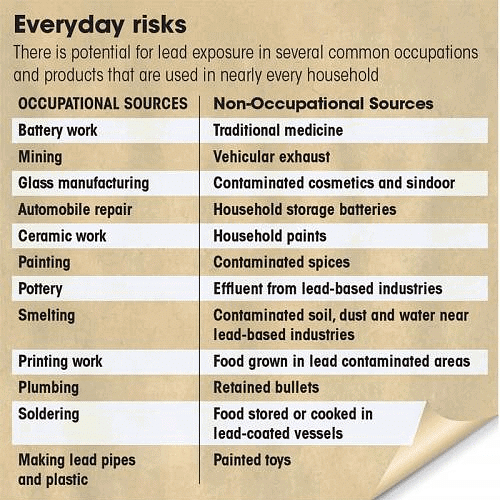Environment and Ecology: February 2023 UPSC Daily Current Affairs | Environment for UPSC CSE PDF Download
Deep Sea Mining and its Threats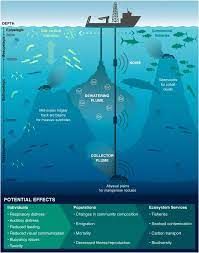
In News
- Recently, a study published in the journal Frontiers in Marine Science has warned that commercial deep-sea mining could pose a serious risk to ocean ecosystems.
Key Takeaways
- The paper has stressed particularly the cetacean population, including whales, dolphins, and porpoises and cautioned that any disturbance on any scale is long-lasting and irreversible.
- The study has also highlighted that commercial-scale mining could damage the oceans in ways that are not yet fully understood, and at the expense of species that have been the focus of conservation efforts for many years.
- Deep-sea mining is the process of retrieving mineral deposits from the deep seabed, which covers two-thirds of the total seafloor.
- Despite the risks to ocean ecosystems, the Pacific Island nation of Nauru plans to start deep-sea mining, invoking a two-year rule inserted as a part of the UN Convention on Law of the Seas (UNCLOS).
- The “two-year rule” clause of the UNCLOS requires the ISA to put in place the governance infrastructure - the rules, regulations, and procedures governing the contours of deep-sea mining within two years of approval.
- With the 11th Annual Deep Sea Mining Summit 2023 to be held in London, United Kingdom, it is expected that the agenda will include the “economic landscape and growth for deep sea mining and technological developments associated with commercialising”.
Key issues
- Commercial-scale deep-sea mining could come at the expense of cetaceans like whales, dolphins, and porpoises, many of which are already endangered.
- The interest in the mineral deposits of the seabed has grown due to depleting terrestrial deposits of metals such as copper, nickel, aluminium, manganese, zinc, lithium and cobalt.
- Demand for these metals is also increasing to produce smartphones, wind turbines, solar panels and batteries.
- The International Seabed Authority (ISA) has in recent years issued 31 contracts to explore deep-sea mineral deposits.
What is Deep-sea mining?
About
- It refers to the extraction of minerals and other resources from the seabed, which can be found in large quantities in the deep ocean.
- These minerals include metals such as copper, nickel, cobalt, and rare earth elements, as well as valuable resources such as oil and gas.
Major types of deep-sea mining
- Manganese nodule mining: This involves collecting nodules of manganese, iron, and other metals that are scattered on the ocean floor.
- Seafloor massive sulphide (SMS) mining: This involves extracting mineral deposits formed near hydrothermal vents, which can contain high concentrations of copper, zinc, and other metals.
- Cobalt crust mining: This involves collecting crusts of cobalt, nickel, and other metals that form on the surface of seamounts.
Importance of Deep-Sea mining
- Depletion of land-based resources: Deep-sea mining presents an opportunity to access new sources of valuable resources such as cobalt and rare earth metals which are essential to modern technology and industry but are becoming increasingly scarce on land.
- Growing demand for minerals:It has the potential to provide a reliable and abundant supply of minerals the demand for which is rapidly increasing, driven by the growth of industries such as renewable energy, electric vehicles, and consumer electronics.
- Economic benefits: It has the potential to create jobs, stimulate economic growth, and generate revenue for governments and companies.
- Strategic importance: Developing a domestic supply of these resources is seen as strategically important for India as many of the minerals and metals that are found in deep sea mining, such as cobalt and rare earth metals, are essential to national security and defence.
Major concerns of Deep-Sea mining
- Environmental impacts: Mining operations can disturb and damage fragile deep-sea ecosystems, including coral reefs, hydrothermal vents, and other important habitats.
- Noise pollution: The process generates noise pollution that can overlap with the frequencies at which cetaceans communicate, causing auditory masking and behavioural changes in marine mammals.
- Thermal pollution: The mining vehicles also generate sediment plumes that could smother the benthic species at the bottom of the ocean.
- Regulatory gaps: There is currently a lack of international regulations governing deep-sea mining, which could lead to environmental harm and other negative impacts.
- Technological challenges: Deep-sea mining requires advanced technologies and equipment that are currently under development, and may not be cost-effective or efficient enough to make the practice commercially viable.
- Social and economic impacts: The potential benefits of deep-sea mining may not be evenly distributed, and could lead to social and economic disparities between different communities.
Government Steps
- National Centre for Polar and Ocean Research (NCPOR): It was established in 2020 by the Ministry of Earth Sciences in Goa, which is tasked with exploring the country's deep-sea mineral wealth.
- Draft Deep Seabed Mining Regulations, 2021: It has been formulated by the Indian government to provide a legal framework for the exploration and exploitation of mineral resources in the country's exclusive economic zone (EEZ).
- International collaborations: The government is also considering setting up a nodal agency to regulate deep sea mining activities in the country, in line with the International Seabed Authority (ISA) and the United Nations Convention on the Law of the Sea (UNCLOS).
Way Ahead
- Overall, while deep-sea mining has the potential to meet growing demand for key minerals, there are significant challenges and concerns that must be addressed to ensure that the practice is sustainable, responsible, and beneficial for all stakeholders.
- However, it is important to note that deep sea mining also presents several challenges, including environmental impacts and the need for technological and regulatory development.
- It is crucial that any deep-sea mining operations are conducted in a sustainable and responsible manner to minimize negative impacts on the marine environment and ensure the long-term availability of these resources.
Marine Spatial Planning Framework
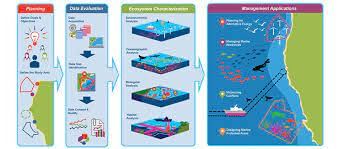
Why in News?
Marine Spatial Planning Framework

Puducherry has launched the country’s first Marine Spatial Planning (MSP) framework as part of a pact under the Indo-Norway Integrated Ocean Initiative.
- Puducherry and Lakshadweep were chosen as coastlines to pilot the MSP initiative after a 2019 Memorandum of understanding (MoU) between India and Norway.
What is Marine Spatial Planning?
- MSP is an ecosystem-based spatial planning process for analysing current and anticipated ocean and coastal uses and identifying areas most suitable for various activities.
- It provides a public policy process for society to better determine how the ocean and coasts are sustainably used and protected - now and for future generations.
What is this Framework About?
- Ministry of Earth Sciences oversees the implementation of the MSP through National Centre for Coastal Research (NCCR), the National Centre for Sustainable Coastal Management, the Puducherry Coastal Zone Management Authority and Department of Science, Technology and Environment, Puducherry in collaboration with Norwegian Environment Agency.
- The two nations have agreed to provide continued assistance towards the sustainable use of ocean resources, with the aim of promoting economic and social development in coastal regions.
- After successful implementation of pilot project in Lakshadweep and Puducherry, the framework can be replicated to other coastal regions of the country.
What is the Significance of MSP Framework?
- An Ecosystem-based Approach: It aims to simultaneously enhance ocean health and economic growth in a manner consistent with principles of social equity and inclusion.
- Vital Governance Tool: it is a tool to ensure the emergence of a Blue economy characterised by a sustainable and equitable ocean resource management, instead of an environmentally unsustainable “brown economy.
- Tool in Balancing Conflicting Interests: It can be used to balance the demands for tourism growth with the livelihood concerns of fisher communities in terms of the use of coastal land and marine waters.
- In line with Blue Economy Policy: Blue economy policy seeks to enhance contribution of coastal areas to GDP while preserving Marine biodiversity.
- Currently, the blue economy comprises 4.1% of India’s economy.
- Vast Coastline: With a coastline of nearly 7500 kilometres, India has a unique maritime position with respect to environmental responsibilities and economic growth opportunities.
World Likely to See 2°C Warming by 2050
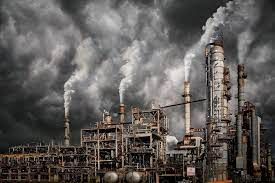
Why in News?
Recently, a study published titled “contradicted projections from the Intergovernmental Panel on Climate Change (IPCC)”., states that the planet is likely to warm up by two degrees Celsius by 2050, even under a low-emission scenario.
- The researchers used artificial intelligence called Artificial Neural Networks (ANN) to predict the time for reaching the 1.5 °C and 2°C thresholds.
- The world has recorded a 1.1°C rise in temperature compared with the average in 1850-1900.
What are the Key Findings?
Projection
- There is a higher likelihood that 2°C will be reached under the low emission scenario compared with the IPCC AR6 (Sixth Assessment Report) synthesis assessment, and may fail to uphold the Paris Agreement.
- The Paris Agreement aims to limit the rise to below 2°C while pursuing efforts to limit the increase to 1.5°C.
- The IPCC estimated that the 1.5°C threshold could be attained as early as the 2030s under all emission scenarios.
- Global warming is already on the verge of crossing the 1.5°C threshold, even if the climate forcing pathway is substantially reduced in the near term.
- The threshold of 1.5°C will reach somewhere between 2033 and 2035 in the high, intermediate and low forcing scenarios.
- The world could touch 2°C by 2050 under the high-emission scenario, 2049 and 2054 in the intermediate and low-emission scenarios, respectively.
- In contrast, the IPCC estimated the likelihood of touching 2°C of global warming during the mid-21st century is high under a high-emission scenario.
Significance of Limiting Warming
- Limiting warming to 1.5°C will reduce the number of people frequently exposed to extreme heat waves by about 420 million.
- It can also reduce the probability of drought and risks related to water availability.
Implications
- Warming above the threshold of 1.5°C can cause a broad range of climate risks — such as impacts on human health, economic growth, crop yields, coastal and small island communities, terrestrial and marine ecosystems, as well as the frequency, intensity and cost of extreme climate events.
Gross Domestic Climate Risk Ranking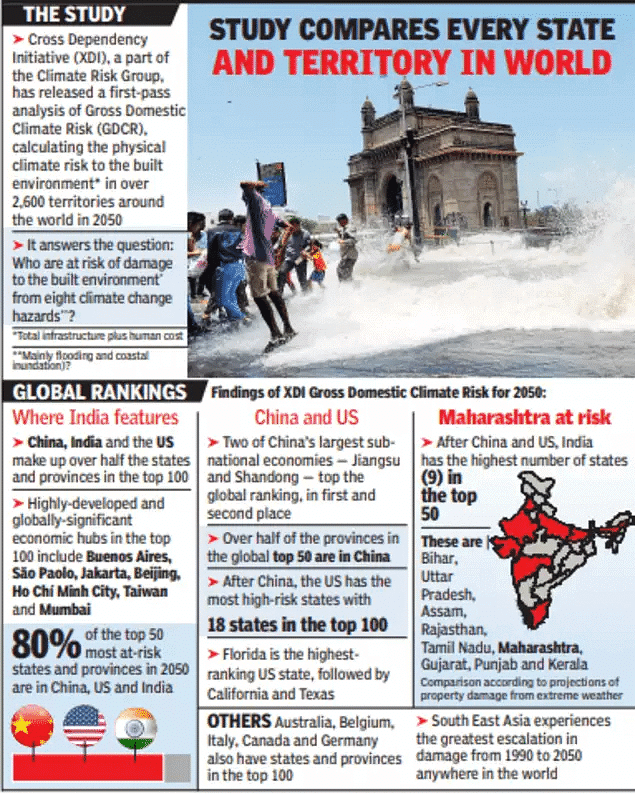
Why in News?

According to Gross Domestic Climate Risk ranking by Cross Dependency Initiative (XDI), India has nine states in the 50 high risk states including Punjab, Bihar, Uttar Pradesh, Maharashtra, Rajasthan, Tamil Nadu, Gujarat, Kerala and Assam.
- XDI is a global organisation specialising in climate risk analysis for regions, banks and companies.
What is this Report About?
- The index calculated the ‘Physical climate risk’ to built environments such as buildings and properties across 2,600 States and provinces globally in 2050.
- The index assigned an Aggregated Damage Ratio (ADR) to each region, which signifies the total amount of damage a region’s built environment would sustain in 2050. A high ADR signifies more peril.
What are the Findings?
Vulnerabilities
- Risk originates from 8 climate change Hazards: Riverine and surface flooding, coastal inundation (coastal flooding), extreme heat, forest fire, soil movement (drought-related), extreme wind and freeze thaw.
- Most damage posed to built infrastructure globally is caused by “riverine and surface flooding or flooding combined with coastal inundation.
Global Findings
- According to report the vast majority (80%) of 50 provinces facing the highest climate risk to their physical infrastructure by 2050 are in China, the US, and India.
- Two of China’s largest sub-national economies – Jiangsu and Shandong – top the global ranking; followed by the U.S. which has 18 regions in the top 100 list.
- Asia dominates the list with 114 of the top 200 regions falling in the continent, including Pakistan, Indonesia and most South East Asian countries.
- Devastating flooding in 2022 affected 30% of the area of Pakistan and has partially or fully damaged more than 9 lac houses in Sindh province.
India Specific Findings
- Under high emissions scenarios such as the Representative Concentration Pathway (RCP) 8.5 , high risk provinces will witness an average of 110% increase in damage risk by 2050.
- Currently, with 0.8 degrees rise in temperature, India’s 27 states and more than three-quarters of its districts are extreme event hotspots accounting for a 5% loss in GDP.
- If global warming is not limited to 2-degree thresholds, climate-vulnerable states in India will lose more than 10% of their gross state domestic product (GSDP).
- Bihar, Assam, and Tamil Nadu had the highest ADR among other Indian States. Assam, in particular, would witness the maximum increase of climate risk: rising up to 330% by 2050.
- Assam has witnessed an experienced exponential increase in flood events since 2011, and it had 15 of India’s 25 districts most vulnerable to climate change.
- 11 of the 36 districts in Maharashtra were found to be “highly vulnerable” to extreme weather events, droughts and dwindling water security.
What is the Significance of the Report?
- The ranking data can also be significant for investors, as extensive built-up areas overlap with high levels of economic activity and property wealth.
- It can inform climate resilient investment, in conjunction with adaptation measures and infrastructure planning undertaken by state and provincial governments
- The finance industry can directly compare global industrial hubs like Mumbai, New York and Berlin using a like-for-like methodology to check vulnerability of global supply chains.
What are the Steps Taken by India regarding Climate Change?
Global Leadership
- India has already established its global thought leadership by founding institutions like International solar alliance (ISA) and Coalition for Disaster Resilient Infrastructure (CDRI). Also, India gave stronger climate targets for 2030 in revised Nationally determined contributions (NDCs).
- It seeks to make India the climate solutions hub for the world by fostering systemic, technological, and financial innovations from the margins to the mainstream.
Reforms in Transport Sector
- India is accelerating its e-mobility transition with the Faster Adoption and Manufacturing of (Hybrid &) Electric Vehicles Scheme.
- A voluntary vehicle scrapping policy to phase out old and unfit vehicles complements the existing schemes.
India's Support to EVs:
- India is among a handful of countries that support the global EV30@30 campaign, which aims for at least 30% new vehicle sales to be electric by 2030.
- India’s advocacy of five elements for climate change “Panchamrit”, at the UNFCCC COP26 in Glasgow is a commitment to the same.
Role of Government Schemes:
- The Pradhan Mantri Ujjwala Yojana has helped 88 million households to shift from coal-based cooking fuels to LPG connections.
Role of Industries in Low-Carbon Transition:
- The public and private sectors in India are already playing a key role in meeting the climate challenge, helped by growing customer and investor awareness, as well as increasing regulatory and disclosure requirements.
- Hydrogen Energy Mission: Focus on generation of hydrogen from green power resources.
- Perform, Achieve and Trade (PAT): It is a market-based mechanism to further accelerate as well as incentivize energy efficiency in the large energy-intensive industries.
Biodiversity Beyond National Jurisdiction
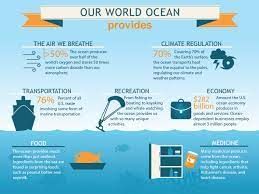
Why in News?
India has urged the member nations to stay dedicated to the conservation and preservation of the oceans and its biodiversity during the ongoing session (Feb-March 2023) Of Intergovernmental Conference (IGC)i.e., IGC-5 of Biodiversity Beyond National Jurisdiction (BBNJ).
- India supported the high ambition coalition for the early conclusion of the International Legally Binding Instrument of BBNJ under United Nations Convention on the Law of the Sea (UNCLOS).
What are the Key Developments?
- Several rounds of intergovernmental talks have been ongoing since 2014, with the most recent one taking place in Feb-March 2023.
- Despite significant progress on several major issues, negotiations are still ongoing, and consensus not arrived at important issues like funding, intellectual property rights and institutional mechanisms.
- India’s approach to biodiversity management is congruent with three globally accepted principles: conservation, sustainable usage, and equitable benefit sharing.
What is the BBNJ Treaty?
- The “BBNJ Treaty”, also known as the “Treaty of the High Seas”, is an international agreement on the conservation and sustainable use of marine biological diversity of areas beyond national jurisdiction within the framework of the UNCLOS.
- BBNJ encompasses the high seas, beyond the exclusive economic zones or national waters of countries.
- According to the International Union for Conservation of Nature (IUCN), these areas account for “almost half of the Earth’s surface”.
- These areas are hardly regulated and also least understood or explored for its biodiversity - only 1% of these areas are under protection.
- Launched at the One Ocean Summit in February 2022, the High Ambition Coalition on Biodiversity Beyond National Jurisdiction brings together many delegations engaged in the BBNJ negotiations on a common and ambitious outcome at the highest political level.
- The negotiations are centered around a package of elements agreed upon in 2015, namely:
- the conservation and sustainable use of marine biological diversity of areas beyond national jurisdiction, in particular, together and as a whole, marine genetic resources, including questions on the sharing of benefits
- area-based management tools, including marine protected areas
- environmental impact assessments
- capacity-building and the transfer of marine technology
What is the Need of Legally Binding Instrument for BBNJ?
- Biodiversity in areas beyond national jurisdiction is critical for the health of the ocean, the well-being of coastal people, and the overall sustainability of the planet.
- Areas beyond national jurisdiction comprise 95% of the ocean and provide invaluable ecological, economic, social, cultural, scientific and food-security benefits to humanity.
- However, these areas are now vulnerable to growing threats, including pollution, overexploitation, and the impacts already visible of climate change.
- The increasing demand for marine resources in the coming decades – for food, minerals or biotechnology – threatens to exacerbate this problem.
- The deep seafloors, believed to be the harshest habitat, the extinction process is setting in there.
- The 184 species (of Molluscs) assessed, 62% are listed as threatened: 39 are critically endangered, 32 are endangered and 43 are vulnerable. Yet, the International Seabed Authority, a Jamaica-based intergovernmental body, is allowing deep sea mining contracts.
- Biodiversity occurring in areas beyond national jurisdiction remains a vital resource from the global seas, with more than 60% of it still to be managed and regulated with a legal frame work aimed at conservation.
Conclusion
- Adoption of Legally binding instrument of BBNJ will signal the international community’s strong commitment to the conservation and sustainable use of marine biodiversity in the areas beyond national jurisdiction, and will provide a clear mandate for the implementation of the agreement.
Adi Ganga Revival Plan
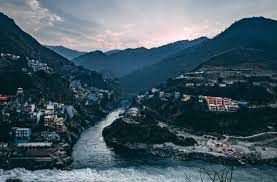 Why in News?
Why in News?
Recently, plans to revive Adi Ganga (the original channel of River Ganga passing through the city of Kolkata) have been announced.
- The National Mission for Clean Ganga has allocated around Rs 650 crore to revive the ancient river and it has been included in a multi-country South Asian River project on combating pollution.
What are the Major Issues and Developments Associated with Adi Ganga?
Encroachment History:- The river, which was once the main channel of the Ganga till the 17th century, has been neglected for decades and is now polluted and encroached upon. The choking of Adi Ganga severely impacted the natural drainage of the area.
- However, Adi Ganga continued to thrive till the 1970s. Since then, its water quality gradually deteriorated until it turned into a sewer and got rapidly encroached.
- In 1998, the Calcutta High Court directed the removal of all encroachments on the river within a month.
- However, another report, close to two decades after the first order, showed that the encroachments were still existing.
Current Status
- The river is now practically dead and has turned into a sewer with a load of faecal bacteria crossing 17 million in 100 millilitres of river water, according to the state pollution control board data and dissolved oxygen is zero.
Rejuvenation
- The West Bengal government has been directed by the National Green Tribunal to complete its rejuvenation “positively by September 30, 2025”.
- The river was selected for the pollution study during an international water conference organised by the non-profit Action Aid in Sylhet, Bangladesh.
- Apart from Adi Ganga, Buriganga in Bangladesh, Puyang in China, Bagmati in Nepal and Klang in Malaysia were also chosen for pollution study during the conference.
What is the National Mission for Clean Ganga (NMCG)?
About
- On August 12, 2011, the NMCG was listed as a society under the Societies Registration Act, 1860.
- The NMCG is implemented by the National Council for Rejuvenation, Protection and Management of River Ganga also known as the National Ganga Council.
Objective
- The objective of the NMCG is to reduce pollution and ensure rejuvenation of the Ganga river.
- This can be achieved by promoting intersectoral coordination for comprehensive planning & management and maintaining minimum ecological flow in the river, with the aim of ensuring water quality and environmentally sustainable development.
Organization Structure
- The Act envisages five tier structure at national, state and district level to take measures for prevention, control and abatement of environmental pollution in river Ganga as below:
- National Ganga Council under chairmanship of Hon’ble Prime Minister of India.
- Empowered Task Force (ETF) on river Ganga under chairmanship of Hon’ble Union Minister of Jal Shakti (Department of Water Resources, River Development and Ganga Rejuvenation).
- National Mission for Clean Ganga (NMCG).
- State Ganga Committees
- District Ganga Committees in every specified district abutting river Ganga and its tributaries in the states.
What are the Other Initiatives Related to Ganga?
- Namami Gange Programme: It is an Integrated Conservation Mission, approved as a ‘Flagship Programme’ by the Union Government in June 2014 to accomplish the twin objectives of effective abatement of pollution and conservation and rejuvenation of National River Ganga.
- Ganga was declared as the ‘National River’ of India in 2008.
- Ganga Action Plan: It was the first River Action Plan that was taken up by the Ministry of Environment, Forest and Climate Change in 1985, to improve the water quality by the interception, diversion, and treatment of domestic sewage.
- The National River Conservation Plan is an extension to the Ganga Action Plan. It aims at cleaning the Ganga River under Ganga Action Plan phase-2.
- Bhuvan-Ganga Web App: It ensures involvement of the public in monitoring of pollution entering into the river Ganga.
Lead Poisoning
Why in News?
The widespread use of Lead has resulted in extensive environmental contamination, human exposure and significant public health problems in many parts of the world.
What is Lead Poisoning?
About
- Lead poisoning is a type of poisoning that occurs when lead accumulates in the body, often over a period of months or years.
- It is caused by the absorption of Lead in the system and is characterised especially by fatigue, abdominal pain, nausea, diarrhoea, loss of appetite, anaemia, a dark line along the gums, and muscle paralysis or weakness of limbs.
- Children are particularly vulnerable to lead poisoning because their bodies are still developing
What are the Implications of Lead Poisoning?
High Blood Lead Levels
- According to a 2020 report by the UN Children’s Fund (UNICEF) and Pure Earth, half the children in India report high blood lead levels.
- The report says 275 million children in India record blood lead levels beyond the tolerable limit of 5 µg/dL.
- Of these, 64.3 million children’s blood lead levels exceed 10 µg/dL.
- In terms of average blood lead levels among the population, some 23 states exceed the 5 µg/dL margin; levels in the remaining 13 states and Union Territories cannot be determined as there is a lack of research and screening mechanisms to collect data.
Disability-Adjusted Life Years:
- According to a 2016 analysis by the Institute for Health Metrics and Evaluation (IHME), Lead toxicity in India contributes to 4.6 million Disability-Adjusted Life Years (number of years lost due to disease burden) and 165,000 deaths annually.
- IHME is an independent population health research center at the University of Washington School of Medicine.
Adverse Health Impact:
- Once lead enters the bloodstream, it goes directly to the brain, particularly in children.
- It can be transferred to the foetus during pregnancy, leading to low birth weight and slow growth. Lead poisoning can cause anemia and various illnesses in children and adults, affecting neurological, skeletal, and neuromuscular systems.
What are the Challenges to Cope with Lead Poisoning?
Less Attention
- In India, lead does not get as much attention as other potential public health concerns.
- India lacks systems to screen populations for possible exposure. India has some 48 national referral centres for lead projects where blood lead levels can be tested, but screening is usually done on a voluntary basis or at health camps by non-profits.
Poor Recycling Laws
- Many developing countries, including India and under-developing countries have a lack of stringent laws over informal recycling sectors.
- As a result, enormous quantities of (lead)-acid batteries are recovered without using scientific techniques in an unregulated and uncontrolled way.
- Management of lead-acid batteries came under the Batteries (Management and Handling) Rules, 2001. But enforcement capacity to ensure safe and environmentally sound recycling has been inadequate.
- In 2022, The government notified the Battery Waste Management Rules, 2022, but it remains to be seen whether the government can successfully implement this.
High demand for Cheap Products
- Many low-cost products in India contain lead, and people may not be willing or able to pay more for lead-free alternatives.
Way Forward
- Regular screening and testing of lead sources will inform about region-wise prevalence and help tailor interventions, such as “regulations and enforcement, changes in industry practices, training of government officials to assess lead contamination, and changes in public education and consumer behaviour.
- As recycling of used lead-acid batteries risks exposure, discouraging informal operations and regulating the sector will help.
- India must enhance capacity for testing, currently done for blood lead levels, and the government should create facilities for blood lead level screenings at every district hospital.
- Lead poisoning needs to be a part of the narrative of India’s health status.
- There is a need to devise strategies on a state level, through regional bureaucracy, local press and vernacular language to have tangible impact.
|
95 videos|234 docs|52 tests
|
FAQs on Environment and Ecology: February 2023 UPSC Daily Current Affairs - Environment for UPSC CSE
| 1. What is deep sea mining and what are its threats? |  |
| 2. What is a marine spatial planning framework? |  |
| 3. What is the significance of the 2°C warming by 2050? |  |
| 4. What does the gross domestic climate risk ranking indicate? |  |
| 5. What is biodiversity beyond national jurisdiction and why is it important? |  |


